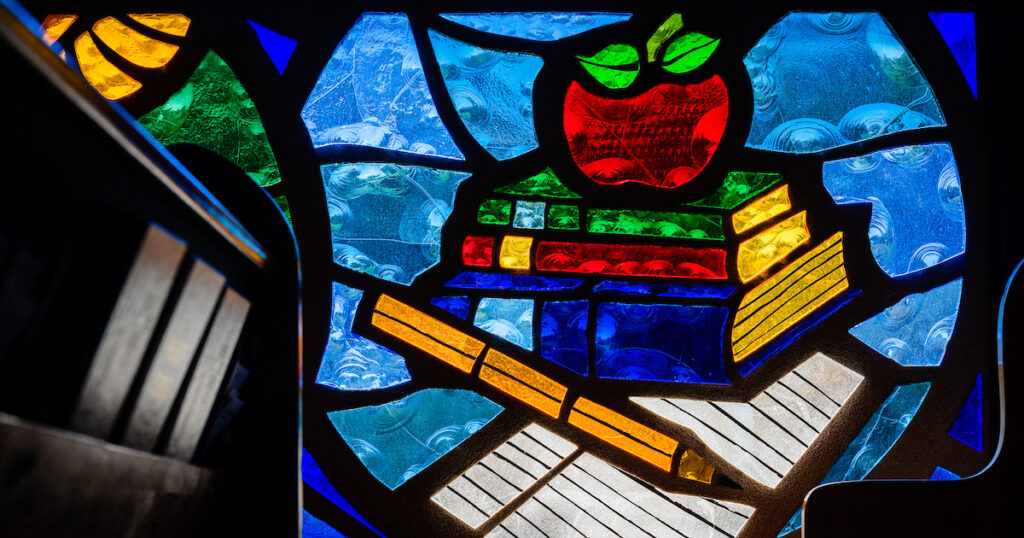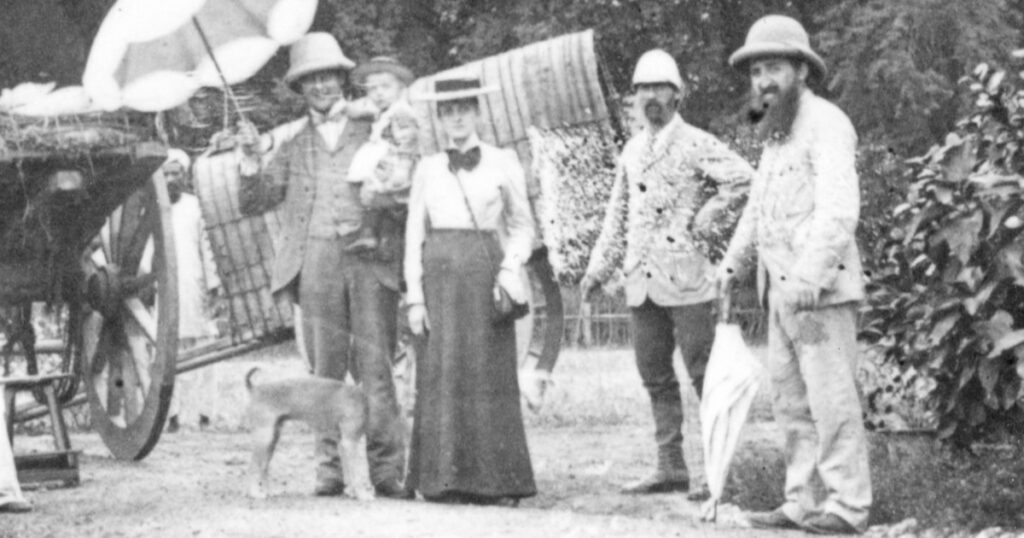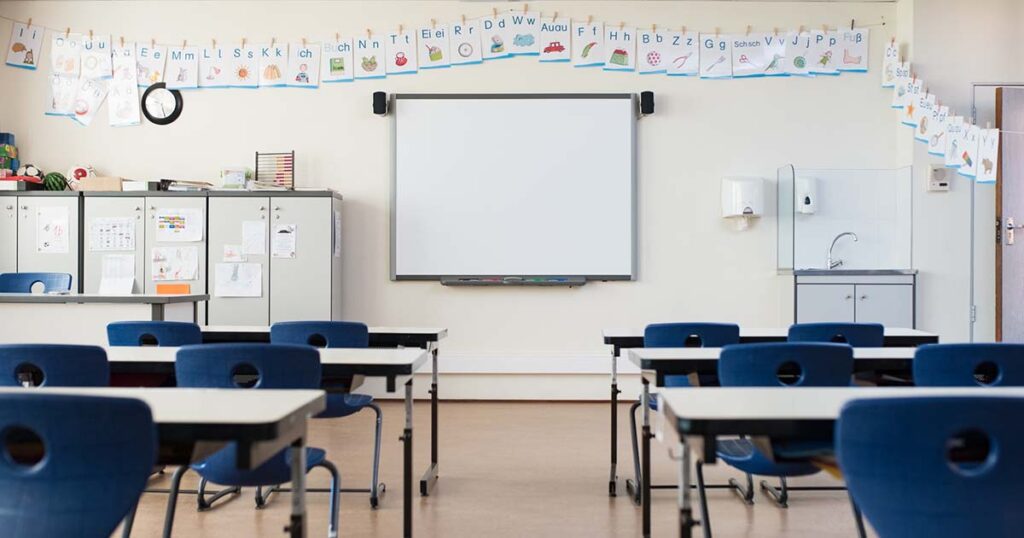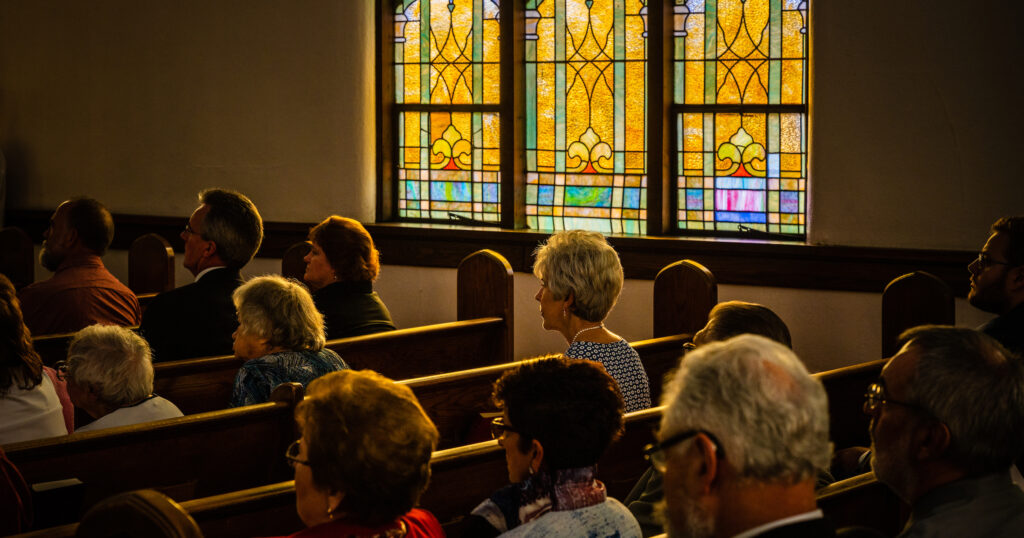Choose one earthly gift for your children. What would it be? For the LCMS’ German Lutheran forefathers, it was the gift of Christian schools. They purchased this gift at the cost of homeland and security, but they considered it a small price to protect the faith of their dear children.
Throughout their remarkable 180-year history, our LCMS schools have suffered the devil’s blatant attacks and subtle cunning aimed at snatching Christ’s children from His church. Yet our Lord has graciously defended our schools. Still today through this earthly gift His dear children learn to love His heavenly gifts.
Founding Lutheran Schools in America: 1838–1847
In 1838 five ships carrying over 700 German Lutherans set sail for America. These Saxon immigrants might have been able to endure the state’s persecution of their churches, but they could not endure the secular rationalism their children were being taught in the German schools. They left their country largely to protect their children’s faith.
The commitment to Lutheran schooling began immediately. On the trans-Atlantic voyage, as well as the steamer trip up the Mississippi, the school-aged children received daily lessons. Despite extreme poverty and hardships, one of the first things the settlers in Perry County, Mo., built was a log cabin schoolhouse.
They shared the conviction of C.F.W. Walther, who declared, “May God preserve for our German Lutheran Church the treasure of its parochial schools! Humanly speaking, everything depends on that for the future of our church in America” (Der Lutheraner XXIX, Feb. 15, 1873).
Walking Together in Education: 1847–1890
Less than a decade after their arrival, the Saxon Lutherans banded together with other confessional German Lutheran immigrants to form a Synod. In the 1847 founding constitution, one of the requirements for membership was “Provision of a Christian education for the children of the congregations.” And, indeed, every one of the Synod’s founding congregations had a Christian day school.
Because of perpetual teacher shortages, pastors often taught in these one-room schools in addition to their other duties. Some schools were small, but many had upward of 100 students in their eight grades. In urban areas, children of non-member German families swelled enrollments, and already in 1850 the Synod recognized and encouraged this missionary aspect of the schools.
As the Synod became established, the 1860s and 1870s saw the opening of a Lutheran high school in St. Louis and a proliferation of textbooks for Lutheran schools from Concordia Publishing House (CPH). Outside the Synod, these years also saw the introduction of kindergartens and Sunday schools, both of which Lutherans viewed skeptically at this time. Besides distrusting the Romanticism and Pietism at the root of these institutions, they believed that the home was the proper place for teaching young children, and the church’s day school for providing Christian instruction.
Combating the Allures of Modernism: 1890–1914
The 1890s in America were, by secular standards, a golden age. However, as material prosperity flourished, the Church frequently sounded warning cries against the worldliness of the era. For the first time in their history, the Synod’s schools saw a decline in enrollment, and particularly in the percentage of the Church’s own children being educated in them. Some were drawn away by the desire for schooling in English, others by the allure of new educational methods touted by the public schools. Still others reasoned that their taxes were paying for public schools and Sunday school would provide their children with sufficient Christian instruction.
Yet despite this decline, Lutheran schools endured where others had failed. By 1890, most denominations’ parochial schools had died out. Along with the Lutherans, only the Roman Catholics, Dutch Reformed and Seventh-day Adventists managed to maintain systems of Christian day schools.
Nor did Lutheran schools hobble along with mediocre expectations as they clung to their conviction that Lutheran children needed Lutheran education. The Synod’s schools produced impressive exhibits of student work for both the 1893 Chicago and 1904 St. Louis World’s Fairs, the latter of which awarded the LCMS parochial schools exhibit a gold medal.
Fighting for Survival: 1914–1935
By the early twentieth century, America was swelling with patriotic pride, and immigrants were less warmly welcomed. With the eruption of World War I, sentiment toward German-Americans grew especially sour. LCMS churches and schools became the targets of violent hatred. In 1918 two Lutheran schools were burned by angry mobs and another was dynamited.
Laws to curb the teaching of German in parochial schools sprang up in many states. The case of Lutheran teacher Robert T. Meyer, arrested for teaching in German in 1919, went all the way to the U.S. Supreme Court, where the ruling against him was finally overturned in 1923.
Other laws requiring attendance at local public schools were pushed in Oregon, Oklahoma, Washington and Michigan. The Masonic Lodges and the Ku Klux Klan made clear that they backed such bills and viewed parochial schools as a threat to American society. Such groups lobbied for the teaching of generic “Christian” religion in public schools and despised church schools that clung to distinctive theological doctrines.
Meanwhile, drought, foreclosures and bank failures in the 1920s and ’30s forced farm families to relocate to cities. Many rural, one-room schoolhouses (which still accounted for more than half the Synod’s schools) had to close. During the Depression years, two-thirds of LCMS children attended public schools, where evolution and other unchristian philosophies now reigned.
Still, Lutheran schools strove to prove their worth. CPH published scores of English-language textbooks in the 1920s. Synodical teachers colleges were quick to cooperate with new state requirements for teacher certification. And the Synod fought in courtrooms for the right to teach our Lutheran children the true faith in our own classrooms.
Growing with the Baby Boom: 1935–1965
As the American economy began to stabilize from the Great Depression, Lutheran schools, too, saw an end to their declining numbers. A slow growth in enrollment beginning in the late 1930s accelerated through the 1940s and ’50s as America experienced the Baby Boom. Once again, the Synod’s supply of teachers could not keep up with the growing number of schools.
Meanwhile, public schools were actively changing. State and federal government agencies began to regulate education more actively. Along with teacher certification and school accreditation, lunch subsidies and other social service programs became a normal and expected part of schooling. This was also the era of school consolidation. By the 1960s, public one-room schoolhouses became almost nonexistent as pupils were bused to large, shiny, new district schools.
LCMS schools sometimes delayed making similar broad programmatic changes, but they generally sought to meet and even exceed the new academic standards adopted by their public counterparts. Many Lutheran schools also took advantage of lunch programs and other government services recently made available to non-public schools.
And as rural residents continued to flock to cities and suburbs, the balance of Lutheran schools also shifted from one-room models to larger schools with single-grade classrooms and principals to oversee them.
Teaching the Christian faith was still at the heart of Lutheran education, while educators of this era spoke in new ways of addressing the “whole child” by offering an integrated education of both sacred and secular knowledge.
Holding Together Amidst Social Fragmentation: 1965–2000
In the early 1960s, Synod publications proudly praised our schools and optimistically saw no end to their growth. However, enrollment in LCMS elementary schools peaked in 1965 and has generally been declining ever since.
Rising rates of divorce, working mothers and single-parent families in the 1970s and ’80s changed the home lives of many students. The LCMS began promoting early childhood education in the mid-’70s as another way to reach out to families. The number of Lutheran preschools swelled dramatically over the next 30 years. By 1991, freestanding LCMS preschools outnumbered elementary schools.
The early ’90s also marked the first time that non-Lutheran students outnumbered Lutheran ones in LCMS schools. In response to this shift, many schools expanded their spiritual focus from instructing baptized children in the Lutheran faith to evangelizing unchurched children in basic Christian teachings.
Looking to the Future: 2000 and Beyond
Today our LCMS schools face many questions: What role should technology play in education? How will school voucher programs assist or hinder Lutheran schools? Will enrollment declines and increasing costs force schools to close, or can our schools radically rethink how they operate in response to contemporary challenges? As we look to the future, our schools continue to find creative answers to these questions.
Regardless of the size or shape of Lutheran schools in the century to come, they will be blessed whenever and wherever they teach children the riches of God’s Word. As they instill these enduring truths in young minds and hearts, they will prove to generations to come that faithful Lutheran Christian education remains now what it has always been: the greatest earthly gift we can give our children.
This article originally appeared in the May 2018 issue of The Lutheran Witness.






I just finished reading this article , it was very interesting . However I was disappointed that Dr Rosa Young and her work setting up school in rural Alabama in the 1920s through 1961 was not included in the time line. Her work in creating Lutheran schools and chapels is commendable.
Watch the video the First Rosa is very informative.
Thank you,
Catherine George
RE: “Will enrollment declines and increasing costs force schools to close, or can our schools radically rethink how they operate in response to contemporary challenges?”
I would imagine that in some locations creative rethinking may indeed be necessary if Christian education is to be sustained there.
A few years after hopes to build a Lutheran school on a site in my area came to an end largely for lack of adequate support, a growing and broadly-supported conservative Christian school already operating several miles away built an impressive new facility on that very site. That school continues to thrive, evidently, and Lutheran parents — an LCMS pastor among them — have spoken highly of the quality of the education that their children have received there.
The school’s board members represent a variety of church affiliations and together serve on the board out of a shared zeal for Christian education. Consequently, the school stands out to me as a good example of how conservative Christians can work together to support Christian education where an exclusively Lutheran program would not be feasible or nearly as strong.
Of course, any prospects for cooperation among variously affiliated Christians to sustain a school raises valid concerns about how the school will be governed and what the religious life and education of the students will entail. In the interest of addressing those concerns well, perhaps this question can be kept front and center: What will serve the children best?
Many Christians outside our church body uphold an uncompromising belief in Scripture’s divine authorship and likewise hold firmly that salvation is by grace alone through faith alone in Christ alone. Various models for governing Christian academies effectively are available, as are examples of succinct statements of faith that provide a clear and compelling biblical basis for a unified educational effort (www.acsi.org/about-acsi/statement-of-faith).
So with Lutheran convictions and sensibilities in mind, how might concerned Lutherans best pursue, shape and evaluate prospects for sustaining a broadly-supported Christian school where keeping a church-sponsored Lutheran school open faces increasing challenges?